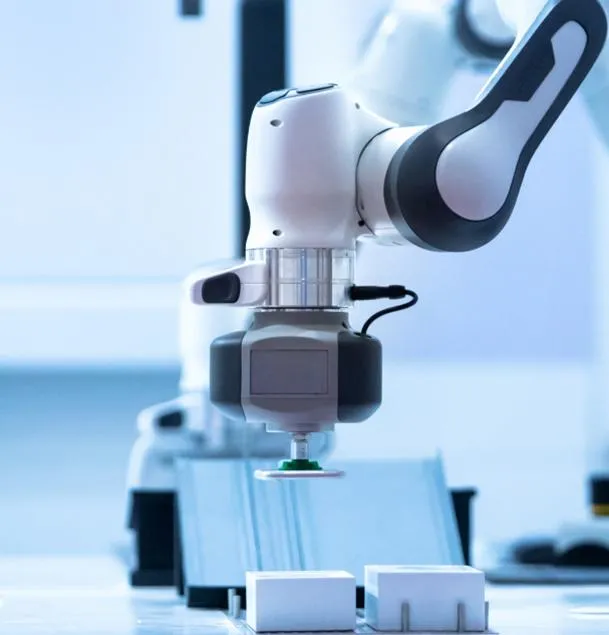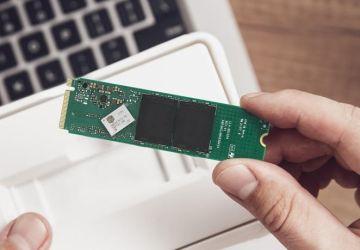How to Choose a Low-Power SSD: Key Factors Affecting Battery Life and Performance
When selecting an SSD (Solid State Drive), power consumption is a crucial factor to consider in addition to capacity and read/write speeds. This is particularly important for laptop users, as the energy efficiency of an SSD directly affects battery life.
This article will delve into the power consumption metrics of SSDs and their significance for users.
What is SSD Power Consumption?
SSD power consumption refers to the amount of electricity an SSD uses under various operating conditions, typically measured in watts (W).
The power consumption can be broken down into several key metrics:
Idle Power Consumption
Idle power consumption is the amount of power an SSD uses when it is not performing any read or write operations. For laptop users, this metric is especially important because laptops spend a considerable amount of time in standby or light-use states. Lower idle power consumption means less energy draw in standby mode, thereby extending battery life.
Generally, the idle power consumption of SATA SSDs ranges from 0.2W to 0.5W, while NVMe SSDs range from 0.5W to 1W.
Active Power Consumption
Active power consumption is the amount of power an SSD uses during read and write operations. This value can vary based on different workloads. For high-performance users, such as those processing large amounts of data or running games, active power consumption is a critical factor. Typically, SATA SSDs consume between 2W to 4W during operation, whereas NVMe SSDs consume between 3W to 8W.
Average Power Consumption
Average power consumption reflects the SSD's average power usage over a period, including both idle and active states. This measure provides a better understanding of the SSD's energy use in real-world conditions. Choosing an SSD with lower average power consumption can significantly reduce overall energy use, which is particularly beneficial for users who use their devices for extended periods.
Maximum Power Consumption
Maximum power consumption indicates the highest power used by an SSD under peak workload conditions. Although this value is typically reached only for short periods, it's essential for users needing high performance to understand this metric to evaluate the SSD's behavior under extreme conditions.
PEAK Power Consumption
PEAK power consumption refers to the maximum instantaneous power an SSD can reach under its highest load or extreme conditions. Key characteristics of PEAK power consumption include:
- Instantaneous Peak Value: Represents the highest power level the device can reach momentarily but is usually maintained for very short durations.
- Extreme Conditions: Occurs during extreme load or sudden conditions, such as the initial current surge when starting a motor or the momentary power during the loudest sound in audio equipment.
- Design Reference: Understanding PEAK power helps engineers design power systems that ensure devices operate normally under extreme loads.
RMS Power Consumption
RMS (Root Mean Square) power consumption is the average power usage over an extended period, calculated by taking the square root of the mean of the squares of the power values over time. Important features of RMS power consumption include:
- Long-term Average: Provides an average power value over a significant period, better reflecting real-world usage than PEAK power.
- Sustained Load: Reflects the steady power usage under normal working conditions, useful for assessing the device's efficiency and stability.
- Efficiency Indicator: RMS power is a crucial measure for evaluating device efficiency, essential for energy-efficient designs and operational cost management.
Comparison of PEAK vs. RMS Power
- Application Scenarios: PEAK power is used to assess instantaneous performance under extreme conditions, while RMS power evaluates sustained performance during everyday use.
- Value Differences: PEAK power is usually higher than RMS power since it represents the maximum instantaneous value, whereas RMS power is a long-term average.
- Design Considerations: Designing power systems requires considering PEAK power to ensure device stability under high-load conditions; RMS power is more critical for overall efficiency and thermal design.
Why is Power Consumption Important?
- Extended Battery Life: For laptop users, low-power SSDs can significantly extend battery life, enhancing mobility.
- Reduced Cooling Needs: Lower power consumption generates less heat, reducing cooling requirements and improving system stability and longevity.
- Energy Savings: Low-power devices save energy, positively impacting environmental conservation and reducing operating costs.
How to Choose a Low-Power SSD?
When selecting an SSD, consider its power consumption metrics besides capacity and performance. Review product specification sheets from manufacturers to compare the power consumption data of different SSDs. Additionally, choose SSDs with energy-saving technologies, such as those supporting DevSleep (Device Sleep) mode, to further reduce power consumption.
Understanding and considering SSD power consumption metrics can help you choose a product that best fits your needs, especially for users prioritizing long battery life and low energy use. We hope this article helps you better understand SSD power consumption and make more informed purchasing decisions.
SSSTC provides the best quality, competitive cost mainstream storage products with superior customized service.Contact us to find more enterprise SSD or industrial SSD solutions.


__24C05D67dI.webp)
__24C15hqqtC.png)
__24C15wOdCC.png)









__24C05XQ2my.jpg)






__24C05fplcZ.png)
__24C05vgHYC.png)


